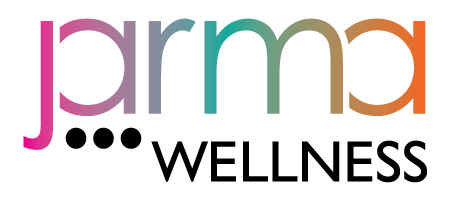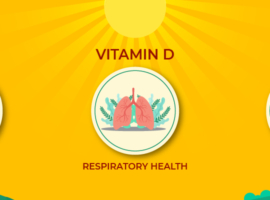Knowing about the Sunshine Vitamin
India is blessed with abundant sunshine, however, modern lifestyle means that we do not get enough Vitamin D, which our body is required to maintain. Some studies suggest Vitamin D deficiency in India to be around 80%.There are few natural sources of Vitamin D. Vitamin D is not only important for stronger and healthier bones, but also to ensure that your lungs, heart, brain and muscles work well and boost the body’s immunity to fight infections. ..Simply put, it is essential for overall good health.
What is Vitamin D?
Vitamin D is a fat-soluble vitamin. It is naturally present in few foods, but can be added to others thus creating Vitamin D fortified food. It is also available as a dietary supplement. Vitamin D is naturally produced when ultraviolet rays of sunlight strike the skin and trigger Vitamin D synthesis. Vitamin D that is obtained from sun exposure, food, and supplements is biologically inert. It must undergo two processes in the body for activation.
The first process occurs in the liver and converts Vitamin D to 25-hydroxyVitamin D, also known as calcidiol. The second process occurs primarily in the kidneys and forms the physiologically active 1,25-dihydroxyVitamin D, also known as calcitriol.
Why You Need Vitamin D?
Without sufficient Vitamin D, bones can become thin, brittle, or deformed. Vitamin D sufficiency prevents rickets in children and osteomalacia (Softening of bones) in adults. Together with calcium, Vitamin D also helps protect older adults from osteoporosis.
Vitamin D plays various other important roles within the body. They include modulation of cell growth, neuromuscular and immune function, and reduction of inflammation. Many gene encoding proteins that regulate cell proliferation, differentiation, and apoptosis are modulated in part by Vitamin D.
Am I Getting Enough?
The best indicator of Vitamin D status within the body is serum concentration of calcidiol . It reflects Vitamin D produced cutaneously and also obtained from food and supplements. Moreover, it has a fairly long circulating half-life of 15 days.
In contrast to calcidiol, circulating calcitriol is generally not a good indicator of Vitamin D status because it has a short half-life of 15 hours and serum concentrations are closely regulated by parathyroid hormone, calcium, and phosphate. Levels of calcitriol do not typically decrease until Vitamin D deficiency is severe.
Serum 25-HydroxyVitamin D [25(OH)D] Concentrations and Health*
| nmol/L** | ng/mL* | Health status |
| <30 | <12 | Associated with Vitamin D deficiency, leading to rickets in infants and children and osteomalacia in adults |
| 30–50 | 12–20 | Generally considered inadequate for bone and overall health in healthy individuals |
| ≥50 | ≥20 | Generally considered adequate for bone and overall health in healthy individuals |
| >125 | >50 | Emerging evidence links potential adverse effects to such high levels, particularly >150 nmol/L (>60 ng/mL) |
Source – Institute of Medicine, Food and Nutrition Board. Dietary Reference Intakes for Calcium and Vitamin D. Washington, DC: National Academy Press, 2010.
** Serum concentrations of 25(OH)D are reported in both nanomoles per liter (nmol/L) and nanograms per milliliter (ng/mL).
*** 1 nmol/L = 0.4 (ng/mL)
Where is Vitamin D Found?
Sun Exposure
It has been suggested by some Vitamin D researchers that approximately 5–30 minutes of sun exposure between 10AM and 3PM at least twice a week to the face, arms, legs, or back without sunscreen usually leads to sufficient Vitamin D synthesis. Individuals with limited sun exposure need to include good sources of Vitamin D in their diet or take a supplement to achieve recommended levels of intake. Schools can plan their physical education/ sports classes in a manner that allows adequate sun-light exposure to children.
Food
Very few foods in nature contain Vitamin D. Fatty fish such as salmon, tuna, and mackerel as well as fish liver oils are among the best sources. Minute amounts of Vitamin D are found in liver, cheese, and egg yolk. Here, Vitamin D is primarily in the form of Vitamin D3 and its metabolite 25(OH)D3. However, certain mushrooms provide Vitamin D2 in variable amounts.
Dietary Supplements
In supplements and fortified foods, Vitamin D is available in two forms: D2 (Ergocalciferol) and D3 (Cholecalciferol).Chemically, they differ only in their side-chain structure. The two forms have traditionally been regarded as equivalent based on their ability to cure rickets and, indeed, most steps involved in the metabolism and actions of Vitamin D2 and Vitamin D3 are identical. Both forms (as well as Vitamin D from food and from cutaneous synthesis) effectively raise serum 25(OH)D levels.
Source: www.vitamindguru.com. (This website is a public awareness initiative by Fermenta Biotech Limited (FBL). Jarma Wellness LLP is partnering with FBL in this initiative.)




